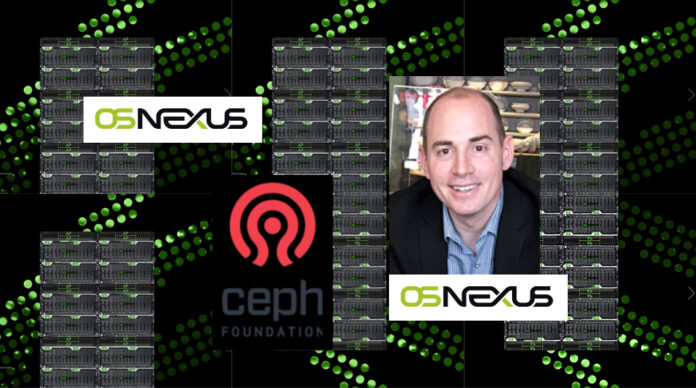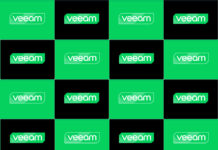Interview: VAST and Solidigm are too quick to write off Ceph disk-based storage. That’s the view of Steve Umbehocker, founder and CEO of QuantaStor Ceph storage system supplier OSNexus. He read the Solidigm/VAST Data SSD vs HDD article and wanted to better explain how Seagate+Ceph is deployed and the associated refresh cycle.
B&F: Why is that?

Steve Umbehocker: First, on large Ceph clusters, we enjoy the use of the Seagate Corvaults, which provide an additional layer of erasure coding beyond that with just Ceph alone to deliver 14 nines of durability based on Markov chain analysis done by Seagate. I would like to see where the equivalent VAST solution stands as a point of comparison.
The use of Corvault also gives us the ability to turn the 30 TB HDDs into 120 TB logical volumes/LUNs. The value there is that it reduces our storage cluster compute requirements by 4:1, which also reduces the power requirements for the compute aspect of the cluster by 4:1. Those compute requirements don’t seem to be mentioned anywhere in the article.
Next, on deployments, 10 PB+ would carry a seven-year extended hardware warranty and the refresh would start at year five to add another five years with another seven-year warranty on the renewal. So for a ten-year span there would be one refresh, not two. Part of the reason this is possible is due to the ADR (Seagate Autonomous Drive Regeneration) technology and the built-in auto healing with ADAPT (Autonomic Distributed Allocation Protection Technology).
B&F: Are VAST and Solidigm right about data reduction?
Steve Umbehocker: Regarding the deduplication and compression numbers, that’s not going to help for pre-compressed formats like video and image formats which are arguably the most common content type for these large and hyperscale clusters, whether it’s medical images or images from telescopes and satellites and pre-encrypted data.
It also ignores that Ceph comes with compression with multiple options including LZ4 and Zstandard (zstd). My view is that it is disingenuous to talk about compression rates that high when it doesn’t match the use case. I’m sure they are getting high compression rates for use cases like containers and VMs.
B&F: How about power efficiency?
Steve Umbehocker: With regard to power consumption and rack space usage, they do make great points. Although HDDs can use less power (7 W) versus some NVMe media (14 W), the 4x density per device between 30 TB Mosaic and 122 TB Solidigm goes to show that Seagate needs to act fast in rolling out 50 TB+ HDDs to keep up with the power efficiency that comes with these amazing densities flash vendors are hitting.
B&F: What is the effect of all this on datacenter costs?
Steve Umbehocker: I estimate about 10 KW/rack for 50 racks per EB. That’s assuming 7 W per drive over 1,060 drives plus an additional 3 KW per rack for servers. At $0.15 per KWh, that’s $1,500/month. Add in another $1,000/rack for the space and that’s $2,500 x 50 racks x 12 months: $1.5 million/year and $15 million over ten years. I think VAST estimated that to be $44 million? I don’t think my numbers are that far off as I’ve shopped for cabinet space recently and anyone deploying 50 racks is going to take into account location, utility costs, and will get discounts at scale.
So, by my estimation, [the numbers are] off by about $13 million on the hardware and as much as $29 million on the power and rack costs, which is $42 million. So $85 million minus $42 million equals $43 million. So one might argue: “OK, at $42 million, you’re still $7 million more expensive than the $35 million for the VAST storage.”
***
Umbehocker concluded that he did not believe a customer would “get 50 percent compression on video/image formats,” claiming the tally then stood at $42 million versus $70 million (2 x 35) for VAST, meaning a $28 million difference. He added: “That’s all before we start talking about software costs, networking, and compute costs of an all-flash vs a hybrid cluster. Hello elephants in the room.”








